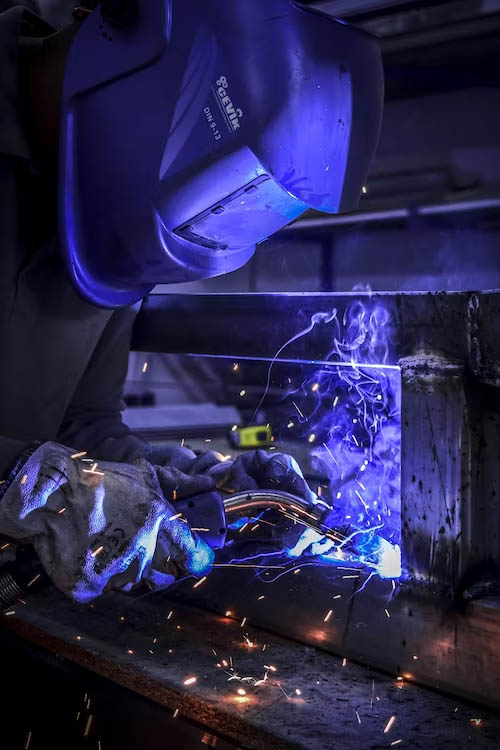How Modern Wash Facilities Reduce Costs and Environmental Impact
As water scarcity concerns grow and environmental regulations tighten, car wash operators are increasingly turning to water reclamation systems to balance efficiency, cost control, and sustainability. These car wash water reclamation systems recycle up to 90% of water used in wash cycles, transforming waste into a reusable resource. Below, we explore the types of reclamation systems available and their operational and financial benefits.
Types of Car Wash Water Reclamation Systems
1. Basic Filtration Systems
How They Work:
- Use multi-stage filters (e.g., sand, bag, or screen filters) to remove large debris like dirt, leaves, and sediment.
- Often paired with settling tanks where heavier particles sink to the bottom.
Best For:
- Low-volume washes in areas with lax environmental regulations.
- Pre-treatment before water enters more advanced systems.
Limitations:
- Doesn’t remove oils, detergents, or dissolved contaminants.
- Typically recycles only 50–60% of water.
2. Membrane Filtration Systems
How They Work:
- Employ ultrafiltration (UF) or reverse osmosis (RO) membranes to remove particles as small as 0.01 microns.
- Effectively eliminate oils, grease, and dissolved solids.
Best For:
- High-volume tunnel washes and full-service facilities.
- Regions with strict water discharge regulations.
Example:
A California-based wash chain reduced freshwater use by 85% using a UF system that produces clear water for final rinse cycles.
3. Chemical/Flocculation Systems
How They Work:
- Add coagulants (e.g., aluminum sulfate) to clump suspended particles.
- Use dissolved air flotation (DAF) to separate sludge from clarified water.
Best For:
- Washes dealing with heavy oil/grease contamination (e.g., truck washes).
- Facilities with space for chemical storage and mixing tanks.
Operational Note:
Requires regular monitoring of pH and chemical levels to avoid damaging wash equipment.
4. Hybrid Biological Systems
How They Work:
- Combine mechanical filtration with biofilters containing bacteria that break down organic waste.
- Ideal for eco-conscious businesses aiming for near-zero wastewater discharge.
Best For:
- Green-certified car washes.
- Facilities using biodegradable soaps.
Case Study:
A Seattle eco-wash achieved 95% water reuse with a biofiltration system, cutting annual water costs from $28,000 to $1,400.
5. Closed-Loop Systems
How They Work:
- Fully recycle 100% of water after advanced treatment.
- Integrate UV sterilization and carbon filtration for potable-grade reuse.
Best For:
- Water-scarce regions (e.g., Arizona, Nevada).
- Luxury washes offering “spot-free” rinse guarantees.
Cost Consideration:
High upfront investment ($50,000–$150,000) but eliminates freshwater costs long-term.
Key Benefits of Water Reclamation Systems
1. Dramatic Cost Savings
- Water Bills: A typical 100-car/day wash using 40 gallons/car spends $1,200/month on water. A 75% reclaim rate cuts this to $300.
- Sewer Fees: Many municipalities charge based on water consumption. Recycling reduces discharge volumes and associated fees.
2. Regulatory Compliance
- EPA Guidelines: The Clean Water Act prohibits car washes from discharging untreated water into storm drains. Reclaim systems help meet National Pollutant Discharge Elimination System (NPDES) permits.
- Local Incentives: Cities like Austin and Denver offer tax rebates for facilities installing Tier 3+ reclamation systems.
3. Enhanced Reputation
- Consumer Appeal: 68% of customers prefer eco-friendly washes (2023 IBISWorld data).
- Certifications: LEED or WaterSaver endorsements attract environmentally conscious fleets and dealerships.
4. Operational Reliability
- Drought Protection: Recycled water buffers against municipal water restrictions.
- Consistent Quality: Advanced systems produce pH-balanced water that improves soap performance and reduces spot-forming minerals.
5. Extended Equipment Life
- Corrosion Prevention: Removing abrasive sediments from recycled water protects pumps, nozzles, and piping.
- Sludge Revenue: Some systems allow selling collected sludge to asphalt plants or compost facilities.
Industry Perspectives
Operator Testimonial:
“After installing a hybrid biological system, our monthly water/sewer costs dropped from $4,800 to $600. The ROI was under 18 months.” – Greg H., owner of 3-tunnel wash in Texas.
Environmental Consultant Insight:
“Modern reclaim systems aren’t just about compliance—they’re profit centers. We’ve seen 22% increases in customer retention at washes advertising water recycling.” – Dr. Elena Moss, EcoWash Solutions.
Maintenance Tip:
“Test recycled water weekly for TDS (total dissolved solids). Keep it below 500 ppm to avoid soap inefficiency and surface spotting.” – Carlos Rivera, WashTek Maintenance Services.
Choosing the Right System
Consider these factors:
- Volume: High-volume washes (>200 cars/day) need UF/RO systems; low-volume may opt for basic filtration.
- Contaminants: Oil-heavy washes require chemical/flocculation systems.
- Space: Biofilters need room for microbial tanks; closed-loop systems demand significant footprint.
- Local Climate: Freezing temperatures affect outdoor biofilters and settling tanks.
The Future of Water Reclamation
Emerging technologies include:
- AI-Optimized Recycling: Sensors adjusting filtration rates in real-time.
- Zero-Liquid Discharge (ZLD): Evaporating remaining wastewater into reusable steam.
- Mobile Reclaim Units: Trailers serving multi-site washes or mobile detailing fleets.
Conclusion
Water reclamation systems have evolved from compliance tools to strategic investments that reduce overhead, attract customers, and future-proof car wash businesses. While upfront costs vary, most operators break even within 2–3 years through water savings alone.



